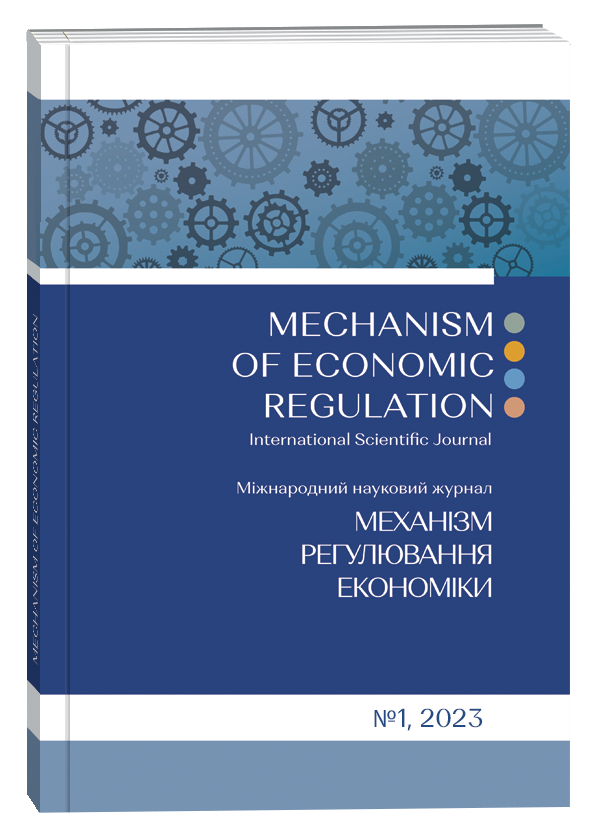THE MODEL FOR FORECASTING SALES OF ENERGY SUPPLY SYSTEMS BASED ON RENEWABLE ENERGY SOURCES
Abstract
Building an effective model for forecasting sales of products (works, services) allows enterprises to achieve the desired level of competitiveness. It is determined that the most relevant for industrial enterprises, engaged in the sale of energy supply systems based on renewable energy sources, are economic and mathematical methods that take into account the seasonality factor. The purpose of the article is to build a model for forecasting sales of energy supply systems based on renewable energy sources. The main research method is correlation and regression analysis. The article substantiates a model for forecasting the sale of energy supply systems to economic agents by industrial enterprises, which is based on determining the functional relationship between the seasonality factor (seasonal component, harmonic component of the model) and the objective function of ensuring an effective time sequence of management decisions/measures and which, unlike the existing ones, takes into account the duration of the seasonality factor, which increases the efficiency of management decisions by optimizing the time lag between their adoption and implementation. As a conclusion, the elasticity coefficient for energy saving costs in order to ensure the competitiveness of industrial enterprise products reaches 100 times the value.
References
Nakashidze, L., Hilorme, T., & Nakashydze, I. (2020). Substantiating the criteria of choosing project solutions for climate control systems based on renewable energy sources. Eastern-European Journal of Enterprise Technologies. vol. 3, № 3 (105). pp. 42–50. DOI: https://doi.org/10.15587/1729-4061.2020.201527
Hilorme, T., Nakashydze, L., Mazyrik, S., Gabrinets, V., Kolbunov, V., & Gomilko I. (2022). Substantiation for the selection of parameters for ensuring electro-thermal protection of solar batteries in spacecraft power systems. Eastern-European Journal of Enterprise Technologies. vol. 3, № 8 (117). pp. 17–24. DOI: https://doi.org/10.15587/1729-4061.2022.258480
Viedienieiev, V. (2019). Effectiveness evaluation of the long-term forecasting models of the agricultural sector products` sales prices in Ukraine”. Ekonomika ta derzhava. vol. 9. pp. 46–51. DOI: https://doi.org/10.32702/2306-6806.2019.9.46
Kharchenko, Yu. (2021). Developing models for forecasting agricultural enterprises sales volume. Economic Scope. vol. 167. pp. 134–139. DOI: https://doi.org/10.32782/2224-6282/167-24
Khoroshun, V. V., & Naumenko, I. A. (2018). Economic-mathematical methods and models of prognostication the supply logistics of trade enterprise. Black sea economic studies. vol. 28, № 2. pp. 179–183. Available at: http://bses.in.ua/journals/2018/28_2_2018/38.pdf
Stepanenko, А., & Khlevniy, А. (2020). Microsoft Time Series algorithm application for sales forecasting. Computer-integrated technologies: education, science, production. vol. 35. pp. 79–83. Available at: http://cit-journal.com.ua/index.php/cit/article/view/76
Eras-Almeida, A. A., Fernández, M., Eisman, J., Martín, J. G., Caamaño, E., & Egido-Aguilera, M.A. (2019). Lessons learned from rural electrification experiences with third generation solar home systems in latin America: Case studies in Peru, Mexico, and Bolivia. Sustainability. vol. 11, № 24. 7139. DOI: https://doi.org/10.3390/su11247139
Li, Q., Long, R., Chen, H., Chen, F., & Wang, J. (2020). Visualized analysis of global green buildings: Development, barriers and future directions. Journal of Cleaner Production. vol. 245. 118775. DOI: https://doi.org/10.1016/j.jclepro.2019.118775
Forouli, A., Gkonis, N., Nikas, A., Siskos, E., Doukas, H., & Tourkolias, C. (2019). Energy efficiency promotion in Greece in light of risk: Evaluating policies as portfolio assets. Energy. vol. 170. pp. 818–831. DOI: https://doi.org/10.1016/j.energy.2018.12.180
Georgiadou, M. C. (2019). An overview of benefits and challenges of building information modelling (BIM) adoption in UK residential projects. Construction Innovation. vol. 19, № 3. pp. 298–320. DOI: https://doi.org/10.1108/CI-04-2017-0030


